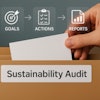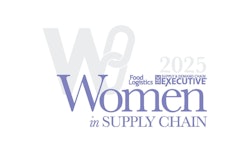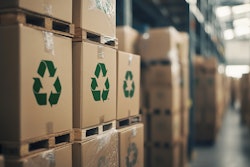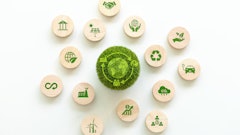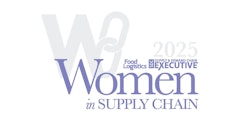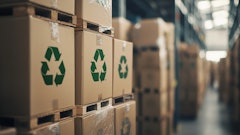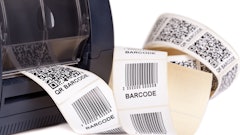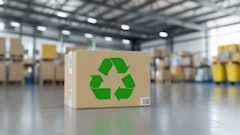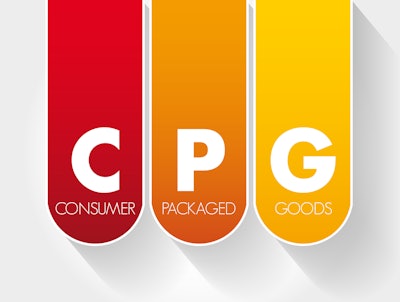
The consumer packaged goods (CPG) industry faces a pivotal moment. Growing pressure from consumers, retailers and evolving regulations is compelling brands to implement effective and transparent sustainability programs that directly impact supply chain operations. For supply chain executives, this presents a strategic imperative to unlock new efficiencies and meet critical sustainability goals.
The momentum toward circularity
A convergence of trends is fueling the drive toward a circular economy. Governments at national, regional and even local levels are setting ambitious new packaging goals, targeting lower manufacturing emissions, higher recycling rates and significant waste reduction. In North America, for example, legislated minimums for post-consumer recyclate (PCR) content and extended producer responsibility (EPR) directly place the burden of a package’s end-of-life disposal on brands. Minimizing potential compliance and financial risks calls for brands to reevaluate their supply chain sourcing and waste management practices.
Consumer demand is equally influential. Consumers perceive packaging as one of a brand’s most controllable and visible sustainability elements. In fact, approximately one-third of consumers[1] consider sustainable packaging among the top three ways brands can address their environmental concerns. This translates into strong purchasing preferences for sustainable products and packaging.
As critical supply chain partners, retailers are also leveraging their influence. They are actively urging suppliers to adopt more recyclable or compostable materials, reduce overall packaging and, in some cases, leverage reuse or refill solutions to reduce waste. Failure to meet these expectations can jeopardize shelf space and partnerships.
Despite this collective push, challenges exist, particularly when it comes to scaling packaging recycling infrastructure and achieving ambitious targets. While nearly all global CPG brands have a goal of 100% recyclable, reusable and compostable packaging by 2030, over 80% of brands are falling short of their waste and recycling targets. This metric highlights the need for deeper, more systemic innovation across the supply chain.
Packaging as a catalyst for circularity
As brands move toward a more circular economy, packaging’s role as a sustainability component is expanding. It now signals a brand’s sustainability ambitions based on format, design and material choices and can communicate with consumers about recycling and reuse. Packaging’s substantial environmental footprint, with roughly 3.5 trillion packages produced annually for food, beverages and home and personal care products, represents a significant area for supply chain optimization. For example, global plastic consumption has quadrupled over the past 30 years, accounting for 3.4% of global greenhouse gas emissions and 350 million tons of waste, 40% of which comes from packaging.
However, recycling can make a significant difference. Recycled rigid plastics like PET and HDPE are over 70% less emissions-intensive than their virgin plastic counterparts. To put this into perspective, a modest 1% increase in recycling rates can reduce approximately 2,000 tons of plastic waste annually for a beverage company producing 10 billion bottles. These metrics demonstrate the tangible impact of seemingly small packaging improvements on operational waste and sustainability.
Every package element plays a role in advancing circularity. For instance, recent innovations in pressure-sensitive labels are helping position the technology as a packaging circularity enabler.
Pressure-sensitive labels: Enabling supply chain circularity
Breakthroughs in pressure-sensitive label technology significantly improve recycled packaging’s quality and the efficiency of the recycling process, offering direct benefits to supply chain operations. One especially powerful innovation is the “clean release” adhesive. This advanced solution improves the quality of recycled rigid plastics, enabling higher value recyclates and supporting closed-loop systems. Pressure-sensitive labels’ durability can also extend bottle lifespan in reuse models, directly contributing to circularity goals. These highly sustainable decorations are recognized by the Association of Plastics Recyclers (APR), RecyClass and other leading industry bodies as being compatible with standard rigid plastic recycling streams, such as HDPE and PET.
Digitally enabled pressure-sensitive labels, including those embedded with RFID and QR codes, can also support the shift toward circular packaging by simplifying collecting and sorting and delivering cost savings associated with traceability and visibility.
Pressure-sensitive labels equipped with RFID technology give brands complete track and trace monitoring of reusable packages throughout their lifecycle. This empowers brands to know where bottles dwell, which optimizes package recovery and bottle fleet size for significant cost savings. Published research shows that this practice can cut a brand’s total bottle fleet by up to 10%. Benefits include a fresh stream of working capital and lower transport emissions.
Additional “smart label” technology advantages include:
● Supply chain transparency and efficiency: Digitally enabled labels provide granular supply chain transparency, optimizing inventory tracking, enhancing sorting efficiency and minimizing waste. RFID technology, for example, enables CPGs to make more data-driven inventory management and purchasing decisions.
● Driving return rates in reuse models: QR codes printed on labels can yield higher bottle return rates by providing consumers with clear, real-time instructions on how and why to return bottles, directly supporting reuse programs.
The strategic direction for brands is clear: Sustainability will become a primary performance criterion and value-driver for brands over the next decade. As consumer scrutiny on packaging intensifies, brands with clear sustainable packaging strategies will gain a competitive edge, enabling differentiated market claims and building stronger brand loyalty. Brands that consumers perceive as circularity innovators will enjoy a competitive advantage over businesses that lack a sustainability-leader reputation.
The imperative for future-forward brands
The global push for sustainability and circularity is poised to fundamentally transform the packaging industry over the next 5-10 years. Forward-thinking brands will be instrumental in efforts to scale recycling and reuse initiatives, which will ultimately reduce carbon emissions and waste across global supply chains. As brands seek to advance their recycling and reuse models, recent innovations in pressure-sensitive label technology can be an important contributor to circular packaging. While the stakes are high in this transition, the potential rewards are even greater for companies that successfully incorporate circularity into their packaging strategies.


